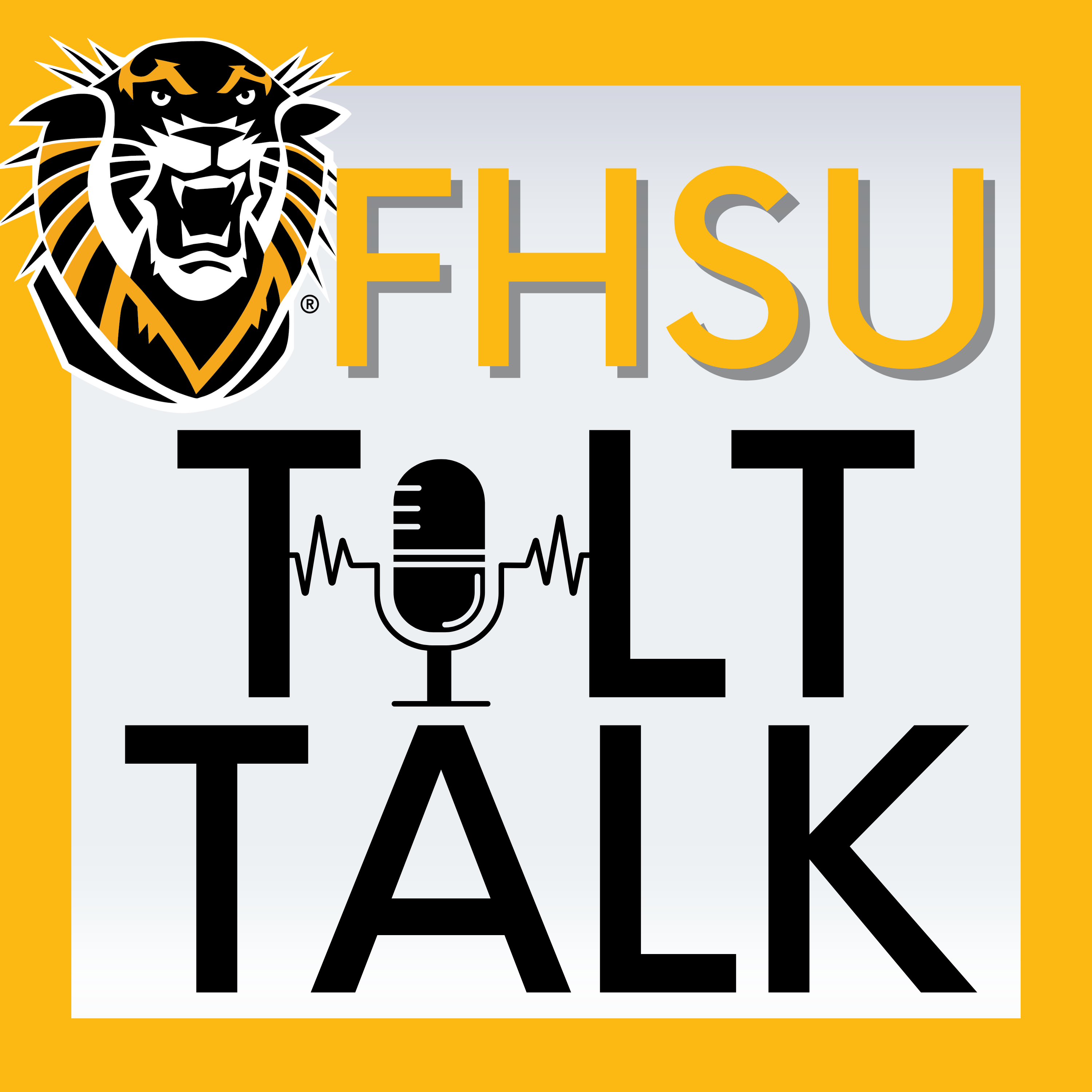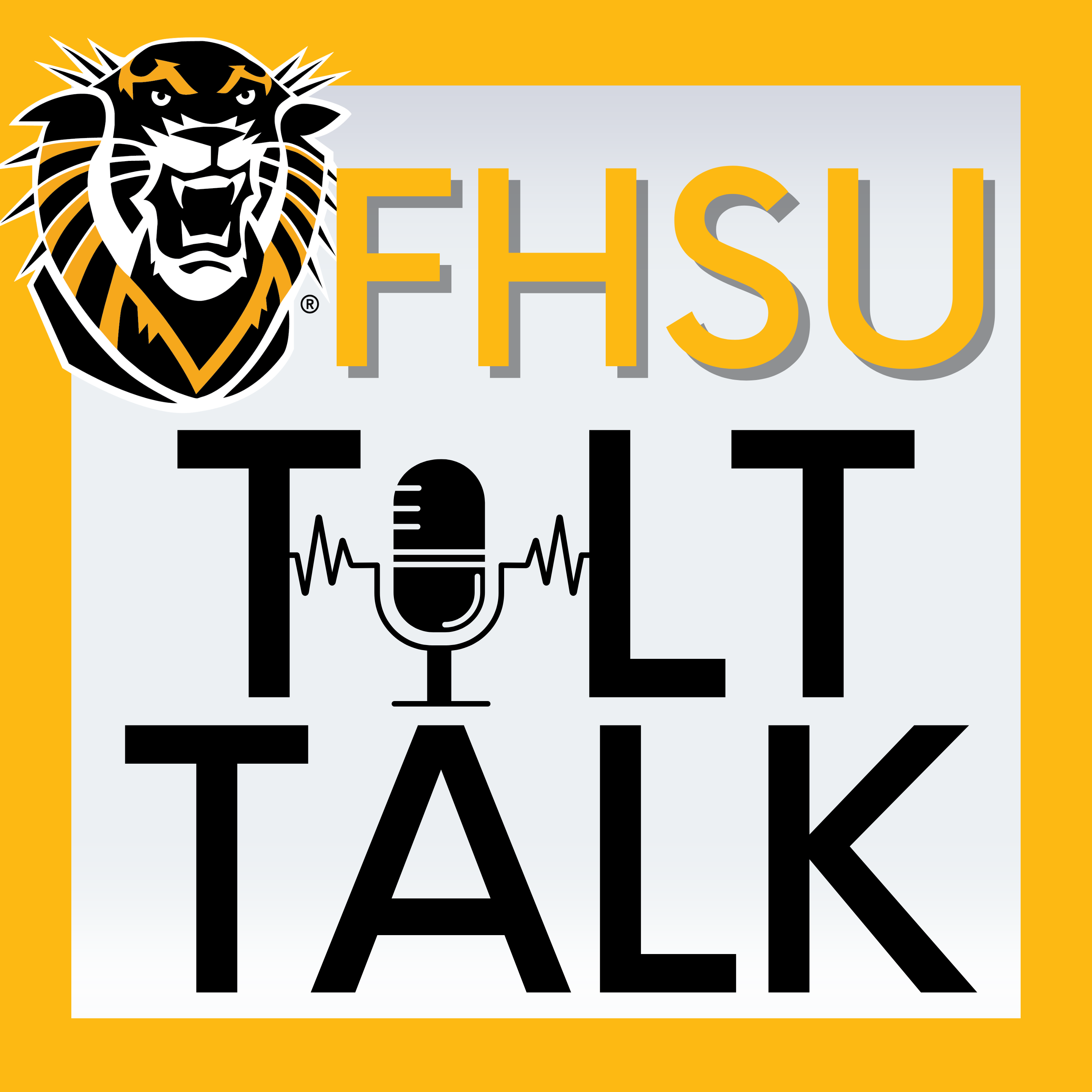Episode Transcript
[00:00:00] Speaker A: Hey, everyone, and welcome back to what's New in Ultra Tilted? Your monthly dose of all things Blackboard Ultra. I am Thomas Matthews Horn.
[00:00:09] Speaker B: And I'm Dani Reilly. We are instructional designers here at Fort Hays State University's Department of Teaching, Innovation and Learning Technologies. Or as we like to call it, tilt.
[00:00:18] Speaker A: That is right. And if you caught our first episode last month, welcome back. If you're new here, we're your friendly neighborhood blackboard enthusiasts who get genuinely excited about LMS updates.
[00:00:31] Speaker B: Genuinely excited might be underselling it a bit, Thomas, but hey, when you see some of the features dropping in the 3900.118 release this June, I think you'll understand why we are pumped.
[00:00:43] Speaker A: Absolutely. And speaking of pumped, Danny, what have you most excited about this month's release?
[00:00:50] Speaker B: Oh, hands down, it's the new jumbled sentence questions. I mean, finally, we've been waiting for this one for a while, right?
[00:00:57] Speaker A: It's like blackboard reads our minds, right? For those who are not familiar, jumbled sentence questions are where instructors can create fill in the blank style questions within paragraphs. Students get a word bank, and they must drag and drop or select the right terms to complete the sentences.
[00:01:14] Speaker B: And here's the cool part. Instructors can add distractors to make it more challenging. You know, throw in some wrong answers to keep students on their toes.
[00:01:23] Speaker A: I love that. Nothing like a good distractor to make students really think about their answers. So walk us through how this work, Stani.
[00:01:31] Speaker B: Sure. So when you're creating the question, you just type out your paragraph and put the words you want to be blanks and square brackets. Like, if I'm teaching about water molecules, I might write single water molecules are held together by covalent bonds, and multiple water molecules are held together by hydrogen bonds.
[00:01:50] Speaker A: And those bracketed words like open bracket, covalent, close bracket, and open bracket, hydrogen close bracket automatically become the answer options.
[00:02:02] Speaker B: Exactly. So the system recognizes them as variables. And get this, you can use letters, numbers, periods, underscores, and hyphens in your variables. So you could have something like H2O or polar covalent bond as an answer.
[00:02:16] Speaker A: That is super flexible. And I noticed in the documentation that there's automated feedback options, too.
[00:02:23] Speaker B: Yes, you can set up feedback for correct and incorrect answers. Plus, and this is huge, you can enable partial credit. So if a student gets half the blanks right, they could get half the points.
[00:02:35] Speaker A: That's fair. I hate those all or nothing questions where one tiny mistake costs you everything.
[00:02:41] Speaker B: Same. And speaking of fairness, the answer options appear in random order from each student. So no copying your neighbor's pattern.
[00:02:48] Speaker A: That's smart. Now here's where it gets even better. They are not just giving us jumbled sentence questions, they're also giving us AI generated jumble sentence questions.
[00:02:58] Speaker B: I know. This is where I geek out a little bit. You can click Generate and the AI will create the question content for you.
[00:03:05] Speaker A: Which is perfect for those days when you're staring at a blank screen trying to get it to produce good examples.
[00:03:13] Speaker B: Or when you need to quickly create multiple versions of a similar question for a question pool. The AI does the heavy lifting, but you still have full control to edit points, add distractors, or set up that feedback we talked about.
[00:03:26] Speaker A: It's like having a teaching assistant who never sleeps and has an endless supply of question ideas.
[00:03:32] Speaker B: Exactly, Though hopefully one that is a bit more creative than my actual TA from grad school.
[00:03:38] Speaker A: I know. Be nice. So, moving on from our new question types, there's another update that I think is going to make a significant difference in student engagement. The Discussion Activity Indicator.
[00:03:52] Speaker B: Oh, that's such a simple but brilliant addition. You know how students sometimes forget to check discussions or they do not realize there's been a recent activity all the time?
[00:04:01] Speaker A: I've had students miss entire conversation threads because they did not think to look.
[00:04:07] Speaker B: Well, now there's a little number indicator right next to the discussions link that shows how many unread posts there are. It's like the notification badge on your.
[00:04:14] Speaker A: Phone apps, which we all know is impossible to ignore. I see that little red number and I just have to click on it.
[00:04:21] Speaker B: Same. It's like basic psychology, but it works. And I think this is really going to help with participation. When students can see at a glance that there's updated content, they're more likely to jump in and contribute.
[00:04:33] Speaker A: Absolutely. And from an instructor perspective, it makes it easier to track engagement too. You can see quickly who is keeping up with the discussions and who might need a gentle nudge.
[00:04:44] Speaker B: Speaking of gentle nudges, let's talk about the knowledge check improvements.
These are not as flashy as the new question types, but I think they're going to make a real difference in the user experience.
[00:04:54] Speaker A: Yeah, they have really cleaned things up. The visual design is much cleaner now. Instead of those somewhat jarring red and green highlights for correct and incorrect answers, there's now a colored bar at the top of each question.
[00:05:06] Speaker B: Much more subtle and professional looking. And they have moved the answer choice letters to the top of each option instead of just floating in the middle. It's one of those changes where you might not consciously notice it, but but it just feels better.
[00:05:18] Speaker A: The mobile experience got a lot of love too. The submit button now takes up the full width at the bottom of the screen instead of being crammed into a corner.
[00:05:27] Speaker B: Yes. As someone who often demos Blackboard on my phone to show faculty how their students might be experiencing it, this is huge. Everything stacks vertically now on small screens, which makes so much more sense than trying to cram everything horizontally.
[00:05:41] Speaker A: And I love that they shortened correct answer to just correct on small screens. And it is those little thoughtful touches that show they are really thinking about the mobile experience.
[00:05:51] Speaker B: Definitely. Oh, and one more thing about the knowledge checks. They changed how they show participation. Instead of showing like the 2/8 students, it now says 2 of 8 students participated. Much more natural language.
[00:06:05] Speaker A: It is more conversational, which fits with the whole feel of knowledge checks being those low stakes formative assessment tools.
[00:06:12] Speaker B: Exactly. They're meant to be check ins, not tests. And the language reflects that now.
[00:06:17] Speaker A: So if we're thinking about all these updates together, what is your take on the overall direction Blackboard is heading with Ultra?
[00:06:24] Speaker B: I think they're really listening to what instructors and students need. The jumbled sentence questions fill a gap that's been there for a while. The AI integration shows that they're keeping up where ed tech is heading. And I think all these usability improvements show that they really care about day to day experience.
[00:06:41] Speaker A: I agree.
And I think that the mobile improvements are especially important. We know more and more students are doing at least some of their coursework on mobile devices, so making that experience smooth is crucial.
[00:06:53] Speaker B: Absolutely. And you know what? I really appreciate that none of these updates require any activation or special configuration. They're just there ready to use.
[00:07:02] Speaker A: That's huge for faculty who might be a bit tech hesitant. They do not have to learn some complicated setup process. They can just start using these features.
[00:07:14] Speaker B: Speaking of faculty who might want to learn more, we should probably mention where they can go for additional resources.
[00:07:19] Speaker A: Great point. If you want to dive deeper into any of these features, head over to bbultra fhsu Edu. That is our main resource hub where you can find links to everything including.
[00:07:32] Speaker B: The anthology community, which is great for connecting with other Blackboard users and sharing ideas outside of fhsu, the anthology anthology.
[00:07:41] Speaker A: Idea Exchange where you can actually submit suggestions for feature features.
Who knows, maybe your idea will be in next month's podcast.
[00:07:51] Speaker B: We also have our Blackboard Ultra open office hours if you want some hands on help or just want to chat about how to use these features. In your courses.
[00:08:00] Speaker A: And of course, there's the what's New in Ultra Blog that this podcast is based on, if you prefer reading to listening.
[00:08:08] Speaker B: So obviously we think listening is more fun.
[00:08:12] Speaker A: Obviously. Well, that's all for this month's episode of what's New in Ultra Tilted.
Thanks for joining us as we geeked out about Blackboard Updates.
[00:08:21] Speaker B: And remember, if you have any questions about these features or want to share how you're using them in your courses, reach out to us as tilt. We love hearing from you.
[00:08:30] Speaker A: Until next month, keep innovating, keep learning, and keep those discussions active.
[00:08:35] Speaker B: Bye Bye.


